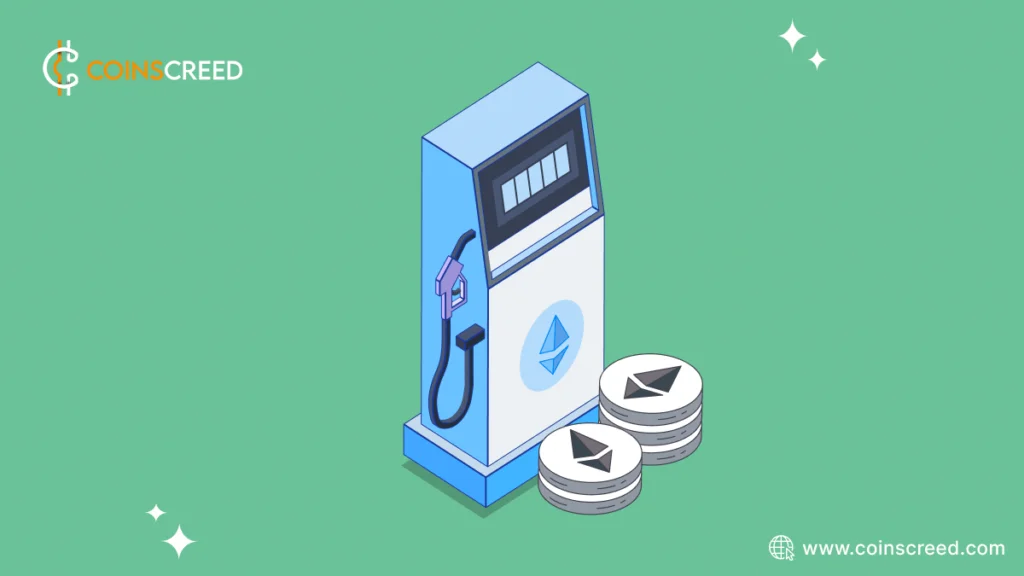Regarding blockchain technology and Ethereum, “gas” and the costs associated with transactions are some of the most basic concepts users often find confusing. Gas is integral to the Ethereum network, facilitating transactions and executing smart contracts. This article will explore the world of gas and transaction costs in Ethereum smart contracts.

What is a Smart Contract?
Smart contracts are the fundamental building blocks of Ethereum’s application layer. They are computer programs stored on the blockchain that follow “if this then that” logic and are guaranteed to execute according to the rules defined by its code, which cannot be changed once created.
Nick Szabo came up with the term “smart contract.”. In 1994, he wrote an introduction to the concept; in 1996, he wrote again about what smart contracts could do.
Szabo envisioned a digital marketplace where automatic, cryptographically secure processes enable transactions and business functions without trusted intermediaries. Smart contracts on Ethereum put this vision into practice.
What are Ethereum Gas Fees?
Ethereum gas fees are the transaction fees users pay on the Ethereum blockchain to conduct transactions. It is what users pay to process transactions or use smart contracts on the Ethereum network.
The denomination of gas in Ethereum is gwei, short for gigawei, with one gwei equal to one billionth of an ETH. You can only pay Ethereum gas fees in Ethereum’s native token, Ether (ETH).
Ethereum gas fees exist because operating the Ethereum network uses resources in the form of computational power. Participants in the Ethereum network can voluntarily operate the blockchain to earn gas fees, provided that they stake their ETH and agree not to trade or sell.
Factors Influencing Gas Costs
Complexity of Operations
The more complex a smart contract or transaction is, the more computational resources it requires. Each line of code in a smart contract incurs a specific gas cost, and complex operations, loops, or conditional statements contribute to higher gas consumption.
Network Congestion
Ethereum is a decentralized network, and its transaction throughput is limited.
Network congestion occurs during high-demand periods, resulting in increased gas prices. Users may find themselves paying more to ensure prompt processing of their transactions.
Gas Price Dynamics
Gas prices are dynamic and can fluctuate based on market demand. Users should monitor gas prices and adjust their transaction parameters to optimize costs.
How to determine Gas Fees
Three variables determine gas fees on the Ethereum network:
- Complexity
- Base fee
- Priority fee
Complexity
Specifically, the amount of gas required to process a transaction.
Base fee
The reserve price below which a transaction is ineligible for processing on the blockchain.
Priority fee
An optional incentive fee to expedite processing time. You can determine your total Ethereum gas fee by adding the base fee to the optional tip and multiplying that sum by the amount of gas used.
How do Ethereum gas fees work?
Suppose you want to buy ETH for your crypto wallet. Here’s a step-by-step process that illustrates how Ethereum gas fees work:
- You initiate a transaction.
- You approve an estimated gas fee
- The transaction publishes on the Ethereum blockchain
- A proof-of-stake validator creates a new block
- Your digital wallet balance updates
- The validator receives gas fees
You initiate a transaction
In this example, you can initiate a transaction to purchase ETH using your chosen platform or crypto exchange. You would input your desired purchase amount and other relevant information.
You approve an estimated gas fee
The platform provides you with an estimate for the Ethereum gas fee. Many platforms and exchanges automatically evaluate Ethereum gas fees and network demand to suggest a gas fee that balances cost with transaction speed. You can submit the transaction for processing if the estimated gas fee is acceptable.
The transaction is sent to the Ethereum blockchain
Your ETH purchase order is sent to the Ethereum network. The data included with the purchase order places an upper limit on the total gas fee that you’re willing to pay.
A proof-of-stake validator creates a new block
Ethereum network validators assemble new blocks for the blockchain by selecting which transactions to validate. Validators first select the transactions with the highest gas fees, as they’re the most profitable. Your transaction is generally classified as complete once it’s included in a block and the block is added to the blockchain.
Your digital wallet balance updates
With your transaction published to the blockchain, your Ethereum balance updates, and the gas fee is withdrawn. Your transaction total is the ETH purchase amount plus the gas fee.
The validator receives gas fees
The validator that processed your transaction receives the tip portions of your gas fee and the gas fees from all the transactions in the block. The base fees are “burned”—removed from circulation—to prevent ETH currency inflation.
Conclusion
Understanding gas and transaction costs in Ethereum smart contracts is crucial for developers and users. It is the key to avoiding a major unexpected expense in running your smart contract.
By grasping the underlying mechanics, monitoring gas prices, and implementing optimization strategies, participants in the Ethereum ecosystem can navigate the network efficiently and cost-effectively.
As Ethereum continues to evolve, staying informed about gas-related concepts will empower users to make informed decisions and contribute to improving the Ethereum network.
